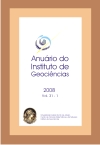Toxicity assessment of latosols and chernosols amended with sewage sludge using bioassays with Eisenia andrei earthworms
DOI:
https://doi.org/10.11137/2008_2_53-60Abstract
Sewage Sludge (SEL) has been used in agricultural activities to improve physical and chemical properties of soils. However, this compound also contains very high levels of heavy metals and pathogenic microorganisms, which can cause serious negative effects on biota and human health. This paper aims to assess potential toxicity of latosols and chernosols amended with SEL, using Eisenia andrei earthworms. Acute toxicity and behavioral tests were performed according to ASMT (2004) and ISO (2002) procedures, respectively. Heavy metals determination was made by Atomic Absorption, and mineralogical characterization by Ray-X Difratometry. Biomass loss was evaluated considering average individual weight. Mercury, lead, zinc and cooper determination in SEL in natura and soils amended with SEL revealed values higher than that recommended by Brazilian legislation. SEL addition to the soils caused no mortality to the organisms, while SEL in natura provoked lethal effects on 100% of the earthworms. Latosol in natura demonstrated higher mortality in comparison to chernosol in natura Behavioral tests indicated that 98,3% and 96,43% of the organisms avoided SEL in natura and latosol with SEL, respectively. However, only 31% of the organisms avoided chernosol with SEL, suggesting a lower level of toxicity in comparison to latosol. Possibly the natural properties of the studied soils (fertility, organic matter content, clay mineralogy, etc.) played an important role in the avoidance behavior of the organisms. Probably expansive clays presence in chernosol stimulates ions adsorption and their concentrations decreasing in soil solution; consequently contaminants bioavailability also tends to decrease. Biomass loss results revealed that the SEL addition decreased the weight loss of the tested organisms, and biomass losses were higher for latosol than for chernosol. In conclusion, it is expected that these results can be used in human health and ecological risk assessment, as well as in sustainable reconditioning of tillable soils, facilitating decision actions in environmental control and public health programsDownloads
Download data is not yet available.
Downloads
Published
2008-12-01
How to Cite
Cesar, R. G. (2008) “Toxicity assessment of latosols and chernosols amended with sewage sludge using bioassays with Eisenia andrei earthworms”, Anuário do Instituto de Geociências. Rio de Janeiro, BR, 31(2), pp. 53–60. doi: 10.11137/2008_2_53-60.
Issue
Section
não definida
License
This journal is licensed under a Creative Commons — Attribution 4.0 International — CC BY 4.0, which permits use, distribution and reproduction in any medium, provided the original work is properly cited.















